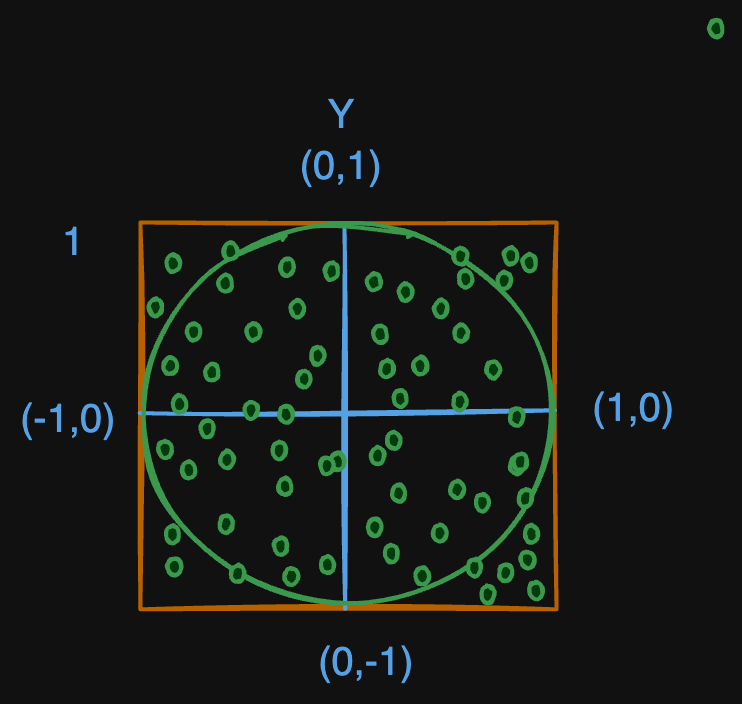Estimating the value of Pi using Monte Carlo method
MediumUpdated: Sep 29, 2025
Problem
To estimate π using the Monte Carlo method, we'll utilize the concept of randomly generating points within a square and determining how many fall inside a quarter circle.
Examples
Example 1
Example 2
Monte Carlo Method
Lets do the setup:
- Imagine a square with side length 2 centered at the origin, with coordinates ranging from
(-1, -1)to(1, 1). - Inside this square, there is a quarter circle of radius 1, also centered at the origin.
- The area of the square is 4 (since side length is 2), and the area of the quarter circle is (πr^2 / 4 = π/4) (since r=1).
i.e. Let B be area of square, and A be area of circle

Now, we count the points
- Generate random points within the square.
- Count how many points fall inside the quarter circle.
- The proportion of points inside the quarter circle to the total number of points approximates the ratio of the areas, (π/4).
Estimating Pi
Let N be the total number of points, and M be the number of points inside the quarter circle.
Code
Java
import java.util.Random;
public class MonteCarloPi {
public static void main(String[] args) {
int numPoints = 1 _000_000;
double piEstimate = estimatePi(numPoints);
System.out.printf("Estimated π to 3 decimal places: %.3f%n", piEstimate);
}
public static double estimatePi(int numPoints) {
int insideCircle = 0;
Random rand = new Random();
for (int i = 0; i < numPoints; i++) {
double x = rand.nextDouble() * 2 - 1; // Generate x in [-1, 1]
double y = rand.nextDouble() * 2 - 1; // Generate y in [-1, 1]
if (x * x + y * y <= 1) {
insideCircle += 1;
}
}
return 4.0 * insideCircle / numPoints;
}
}
Python
import random
def estimate_pi(num_points):
inside_circle = 0
for _ in range(num_points):
x = random.uniform(-1, 1)
y = random.uniform(-1, 1)
if x**2 + y**2 <= 1:
inside_circle += 1
pi_estimate = 4 * inside_circle / num_points
return pi_estimate
# Number of points to generate
num_points = 1_000_000
pi_estimate = estimate_pi(num_points)
print(f"Estimated π to 3 decimal places: {pi_estimate:.3f}")
Complexity
- ⏰ Time complexity:
O(n), wherenis the number of random points generated. - 🧺 Space complexity:
O(1)
Summary
The Monte Carlo method provides a simple yet effective way to estimate π by simulating random points within a specific range and calculating the ratio of points inside a quarter circle to the total number of points. The accuracy improves with an increase in the number of points generated.